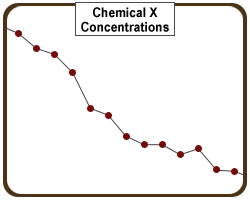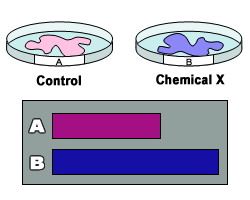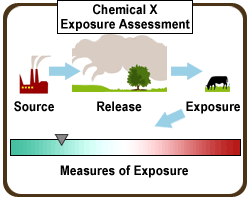Risk assessments are not limited to the study of air toxics, they also may include studies concerning health and environmental effects from chemicals in water and land contamination. IDEM uses approved methodology and procedures to collect and verify data need for the studies, such as chemical levels in soil, water and air samples; inventories of air emissions and water discharges; locations where people live or are exposed to chemicals; meteorological information, including wind speed and direction, precipitation and temperature. The air risk staff generally follows a basic four step risk assessment process, including hazard identification, exposure assessment, dose-response assessment, and risk characterization, as described below.
Step 1) Hazard Identification
After determining an area to study, IDEM samples the affected environment, analyzes the samples, and identifies chemicals that may contribute to increased risk.
IDEM learns about potential health hazards from many sources. The air risk staff screens air toxics monitoring data and utilizes models and emissions inventories to identify areas that may need to be studied. IDEM also utilizes data from screening programs including U.S. EPA’s National Air Toxics Assessment (NATA) and the Toxics Release Inventory (TRI). In some cases, the investigation of a citizen complaint will lead the agency to conduct a risk assessment.
The initial investigation of a site, neighborhood, or area usually includes collecting samples and identifying potential sources of suspected risks. The samples are analyzed to identify concentrations for a comprehensive range of chemicals, not just chemicals that are a suspected risk. If one or more chemicals warrant further study, the agency begins a formal risk study.
Step 2) Exposure Assessment

IDEM establishes long-term monitoring, if necessary, and studies chemical levels.
Air risk staff evaluates exposure for the hazardous chemicals identified. Regardless of what prompted the study, IDEM begins scientifically measuring the impacted environment to determine potential human exposure. This step may require years of sampling or, in the case of certain contaminants, a simple surface wipe. IDEM ensures that the data is quality-assured and verified. IDEM may include factors such as meteorological data in its exposure analysis.
IDEM studies how certain chemicals may enter the body, including inhalation, absorption, and ingestion, as well as the daily lives and habits of people living in the area to determine how they are exposed. Exposure routes and pathways are factors in a chemical’s ability to access different organs and affect the body in dramatically different ways.
Step 3) Dose-Response Assessment

At the same time IDEM evaluates exposure, it also evaluates and chooses the appropriate dose-response factors for the chemicals of concern. IDEM uses dose-response [ZIP], which is information about risk from exposure to chemicals developed by scientists through research including animal studies. When choosing a dose-response factor to apply to a risk assessment study, the scientists conducting the study will use the dose-response factor that best fits the study's parameters.
Step 4) Risk Characterization

Step four is risk characterization, which is the process of combining information from toxicity and exposure to calculate estimates of risk. This will include all the assumptions and scientific information used to estimate risk, the uncertainty associated with the assessment, and any other information that may be useful to decision makers (variables). IDEM evaluates air toxics monitoring data based on the appropriate dose-response factor and calculates the increased risk for the study area.
IDEM shares its complete studies with the public and helps citizens understand the variables that affect the accuracy of the study, put risks in perspective, and understand how risk assessments may affect them. Risk calculations generally will not represent the actual chance of developing symptoms and diseases because there are many factors that influence health and the risk of developing cancer. IDEM makes health-protective assumptions to prevent underestimating risk, which may end up raising the estimated number of calculated symptoms and diseases.
